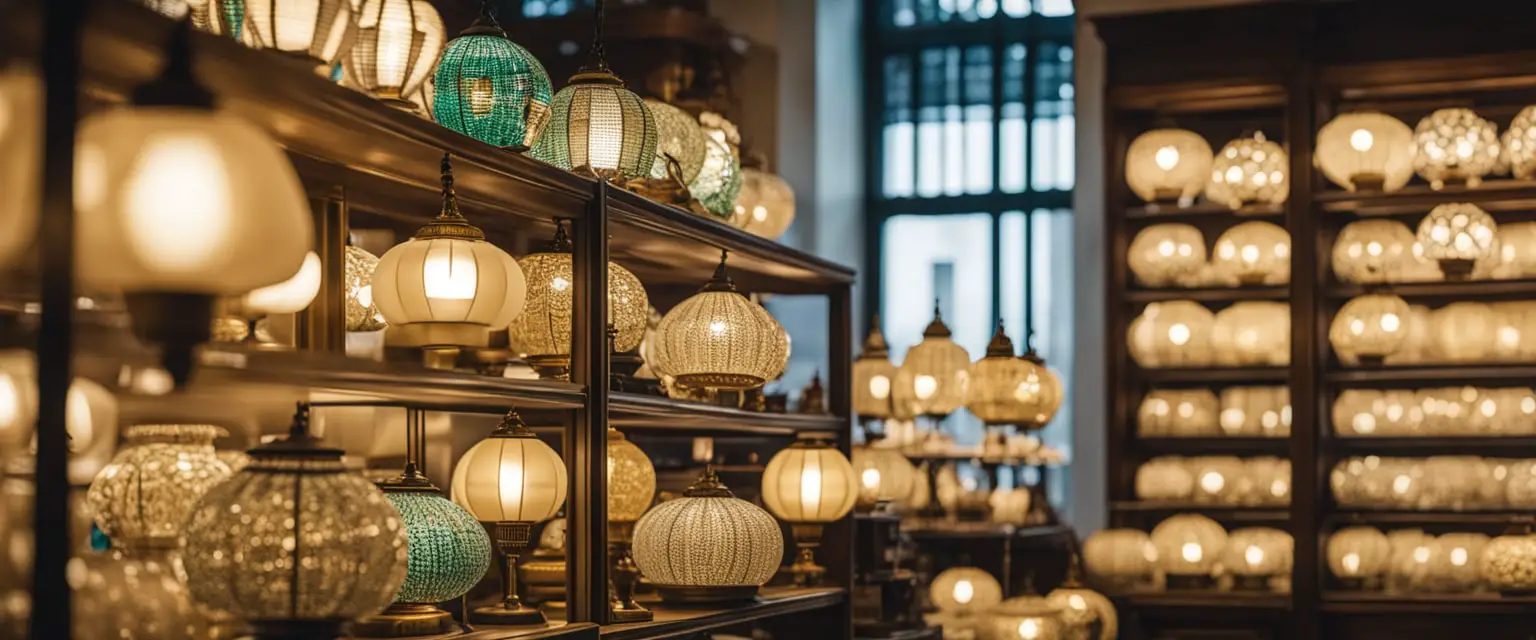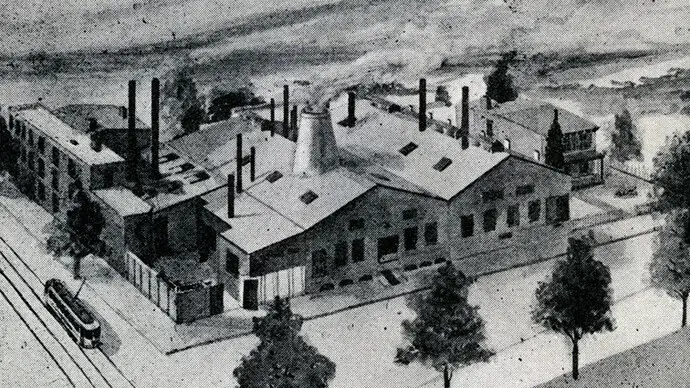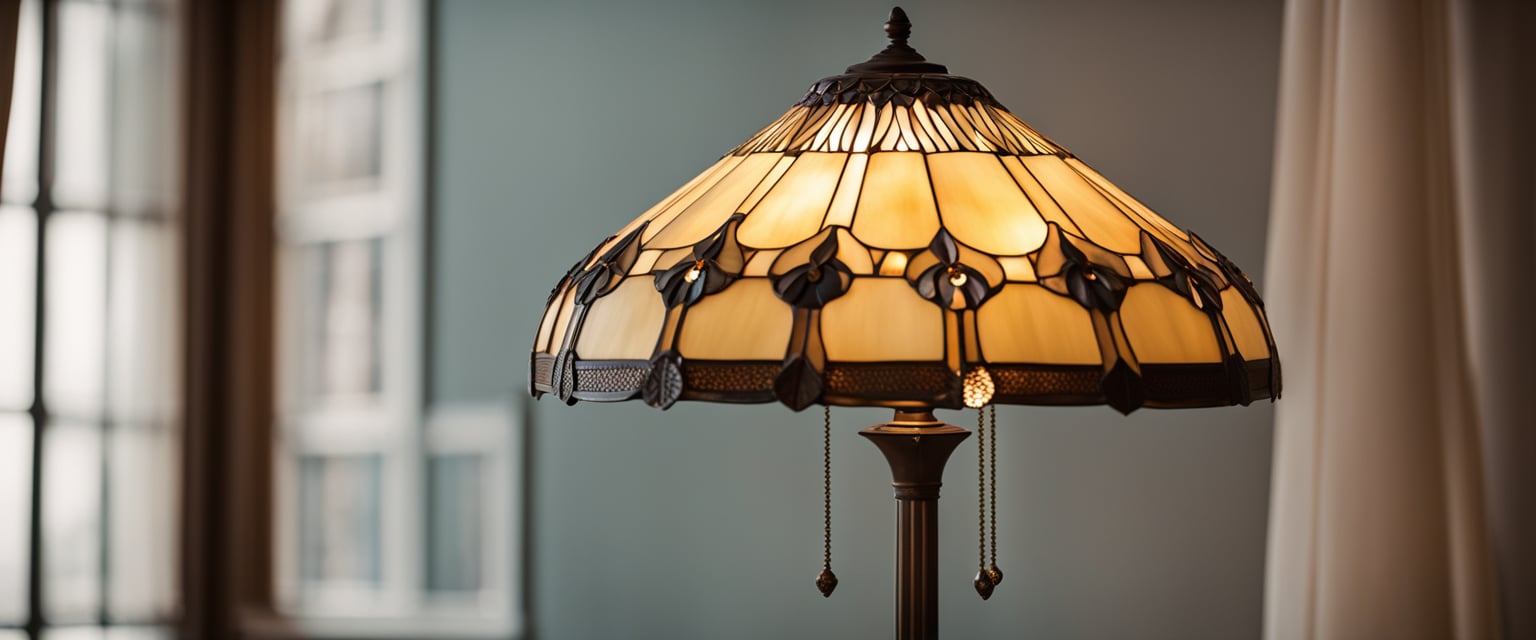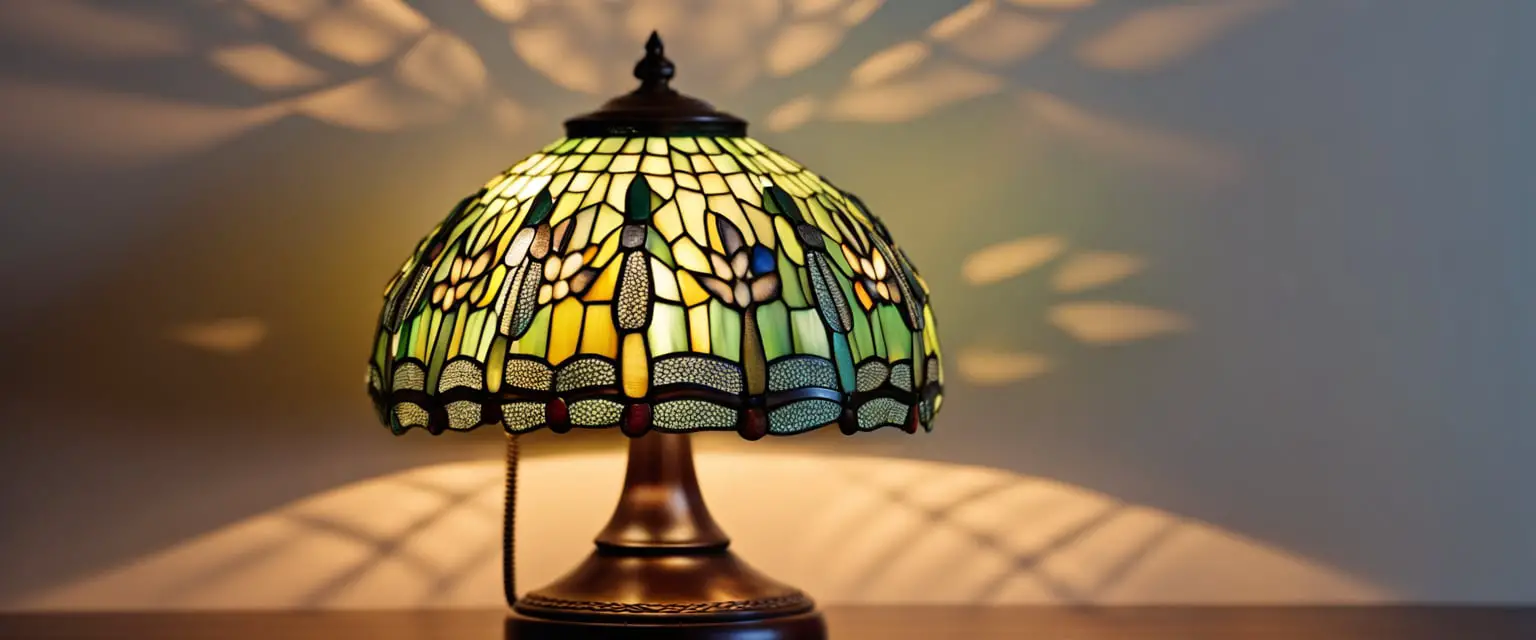Tiffany style Lamps are renowned for their exquisite stained glass shades, ornate metalwork, and intricate designs, which pay homage to the iconic Tiffany lamp aesthetic. These stunning lamps encompass a wide range of modern reproductions and interpretations that capture the timeless elegance and artistic flair of the original Tiffany designs, offering enthusiasts an accessible way to adorn their spaces with the enchanting beauty of these classic lamps.
This post offers an enlightening exploration of the captivating world of Tiffany Style Lamps, providing insights into their enduring appeal and the artistry that defines their design. Whether you’re seeking to adorn your home with timeless elegance or simply intrigued by the beauty of stained glass art, delving into the realm of Tiffany Style Lamps will unveil the allure and craftsmanship that continues to captivate enthusiasts and collectors alike.

Table of Contents
Understanding Tiffany Style
Tiffany style refers to the design aesthetic popularized by Louis Comfort Tiffany in the late 19th and early 20th centuries. The style uses stained glass, bronze, and other materials to create lamps, windows, and other decorative objects.
Tiffany style lamps are a popular type of lamp often used to add a touch of elegance to a room.
Origins of Tiffany Style
Louis Comfort Tiffany was an American artist and designer best known for his work in the Art Nouveau style. He was the son of Charles Lewis Tiffany, the founder of Tiffany & Co.
Louis Comfort Tiffany began his career as a painter but soon turned his attention to decorative arts. In 1885, he founded the Tiffany Glass Company, which later became known as Tiffany Studios.
Tiffany Studios produced various decorative objects, including lamps, windows, and vases. Tiffany’s lamps were trendy and still highly sought after today.
The lamps were made using various materials, including bronze and Favrile glass, which Tiffany developed himself.
Characteristics of Tiffany Style
Tiffany-style lamps are known for their intricate designs and use of color. They often feature floral, dragonfly, or geometric motifs and are typically made using a combination of amber, green, and blue glass.
The glass is often textured, which gives the lamps a unique and exciting look.
One key feature of Tiffany style lamps is the use of bronze. The bases of the lamps are often made from bronze and are typically decorated with intricate designs.
The combination of bronze and stained glass gives the lamps a warm and inviting look.
Tiffany Style Lamps
Tiffany style lamps were first introduced by Louis Comfort Tiffany in the late 19th century. These lamps are known for their colorful, leaded glass shades, which are often geometric or floral designs.
Today, Tiffany style lamps are still popular and can be found in many homes and businesses.
Design Elements
One of the defining characteristics of Tiffany style lamps is their use of leaded glass shades. These shades consist of many small pieces of colored glass held together with strips of lead.
This technique allows intricate designs and various colors to be used.
Another common design element of Tiffany style lamps is green glass. This signature feature of Louis Comfort Tiffany’s original designs is still used in many reproductions today.
The green glass is often used for the leaves and stems of floral designs and for the background of geometric designs.
Variations in Tiffany Style Lamps
While Tiffany-style lamps are known for their colorful, leaded glass shades, their design has many variations.
Some lamps have geometric shades made of straight lines and angles, while others have floral shades made of curved lines and organic shapes.
Tiffany style lamps also come in a variety of sizes. Some are designed to sit on a table or desk, while others are designed to hang from the ceiling.
The size of the lamp can also affect the shade design, with more oversized lamps often having more intricate and detailed shades.
Reproduction Tiffany Lamps
Tiffany-style lamps are known for their intricate stained glass designs and ornate bases. Tiffany Studios originally produced these lamps in the late 19th and early 20th centuries, and collectors highly sought after them.
However, original Tiffany lamps can be expensive and difficult to find, leading many people to use reproduction lamps instead.
Identifying Reproduction Lamps
Identifying a reproduction Tiffany lamp can be complex, as many manufacturers go to great lengths to make their lamps look like the original Tiffany designs.
One way to spot a reproduction is to look for the manufacturer’s mark. Original Tiffany lamps were always marked with the Tiffany Studios logo, which included the company name and a four-digit number.
Reproduction lamps may have a similar mark but will not be identical to the original.
Another way to identify a reproduction lamp is to look at the quality of the materials and construction.
Original Tiffany lamps were made with high-quality glass and metal, and the bases were often cast from bronze. Reproduction lamps may use lower-quality materials or have less attention to detail.
Manufacturers of Reproductions
There are many manufacturers and retailers of reproduction Tiffany lamps, each with their style and quality.
One famous manufacturer is Dale Tiffany, which produces Tiffany-style lamps in various designs and sizes.
Another well-known manufacturer is Century Studios, which specializes in reproducing original Tiffany designs using traditional techniques.
Authenticity and Value
Determining Authenticity
Determining the authenticity of a Tiffany-style lamp is crucial to its value. Tiffany Studios, a company founded by Louis Comfort Tiffany in 1885, made authentic lamps.
These lamps were handcrafted using high-quality materials such as stained glass, bronze, and lead. The original Tiffany lamps are precious and sought after by collectors.
One way to determine the authenticity of a Tiffany-style lamp is to look for a signature.
Authentic lamps will have a signature that says “Tiffany Studios New York” or “Tiffany Studios.” The signature can be found on the lamp’s base or shade.
However, not all authentic lamps have a signature. Some lamps were made before the company started using signatures, and some were made by other artists working for Tiffany Studios.
Another way to determine authenticity is to look at the materials used.
Authentic lamps were made with high-quality materials such as bronze, lead, and stained glass.
Reproduction lamps, however, use cheaper materials such as brass, zinc, wood, or plastic.
Authentic lamps also have a unique patina that develops over time, which is difficult to replicate in reproductions.
Factors Influencing Value
Several factors influence the value of a Tiffany-style lamp. One of the most critical factors is authenticity.
Authentic lamps are highly valuable and can be worth anywhere from a few thousand dollars to over a million dollars, depending on their rarity and condition.
Other factors that influence the value of a Tiffany-style lamp include the design, size, and condition.
Lamps with intricate designs and large sizes tend to be more valuable than simpler designs and smaller sizes. The lamp’s condition is also essential, with lamps in excellent condition being more valuable than lamps with damage or wear.
Collectors play a significant role in determining the value of Tiffany-style lamps.
Collectors are willing to pay a premium for rare and unique lamps, driving up the value of these lamps.
The market for Tiffany-style lamps is competitive, and auctions and private sales are the primary ways to buy and sell them.
Caring for Tiffany Style Lamps
Tiffany style lamps are beautiful and timeless pieces of art that can add elegance to any room. Whether you have a genuine Tiffany lamp or a reproduction, it is important to take good care of it to ensure it lasts for years to come. Here are some tips to help you care for your Tiffany-style lamp.
Maintenance Tips
Regular maintenance is essential to keep your Tiffany style lamp looking its best.
Restoration Considerations
If your Tiffany style lamp needs restoration, it is vital to find a professional specializing in this type of work. Here are some things to consider when looking for a restoration expert:
Purchasing and Selling
Where to Shop
If you are looking to purchase a Tiffany-style lamp reproduction, you have several options. You can visit a local antique store, search online marketplaces such as eBay or Etsy, or visit a specialized Tiffany lamp retailer.
When shopping for a Tiffany-style lamp, it is important to research and ensure that you are purchasing from a reputable seller. Look for sellers with positive reviews and a history of selling authentic Tiffany-style lamps.
Some popular online retailers for Tiffany-style lamps include Amazon, Wayfair, and Lamps Plus. These retailers offer a wide selection of styles and price points to fit any budget.
It is important to note that while these lamps may be labeled as “Tiffany-style,” they are not authentic Tiffany lamps but reproductions instead.
Selling Your Lamp
If you are looking to sell your Tiffany-style lamp reproduction, you have several options. You can list your lamp on online marketplaces such as eBay or Etsy or visit a local antique store.
It is important to research and ensure that you are selling to a reputable buyer. Look for buyers with positive reviews and a history of purchasing authentic Tiffany-style lamps.
When selling your Tiffany-style lamp, it’s important to provide as much detail as possible in your listing. Include information such as the lamp’s age, condition, and any identifying marks or signatures.
Providing clear and detailed photographs can also help attract potential buyers.
The value of a Tiffany-style lamp reproduction can vary greatly depending on factors such as age, condition, and rarity. While some lamps may sell for several thousand dollars, others may only fetch a few hundred.
Setting realistic expectations when selling your lamp and being open to negotiating with potential buyers is a good idea.
Tiffany Style in Modern Decor
Tiffany style lamps have been around for over a century but are still popular today. Many wonder if these lamps are outdated and can be used in modern decor. The answer is yes; they can be used in contemporary decor.
Tiffany-style lamps are known for their intricate stained glass designs and vibrant colors. They are often used as a statement piece in a room and can add a touch of elegance to any space.
They are versatile and can be used in various settings, from traditional to modern.
When using a Tiffany-style lamp in modern decor, it is important to keep the rest of the room simple and clean. The lamp should be the room’s focal point and not be overshadowed by other decor.
To create a modern look, the lamp can be paired with neutral colors such as white, black, or gray.
Another way to incorporate a Tiffany style lamp into modern decor is to use it as a pop of color. If the room is primarily neutral, a brightly colored lamp can add a touch of vibrancy and excitement.
The lamp can be paired with other colorful accents in the room to create a cohesive look.
Frequently Asked Questions
How can you tell if a lamp is a true Tiffany reproduction?
To determine if a lamp is a true Tiffany reproduction, look for a few key features. First, check the lamp’s base.
The original Tiffany lamps had a heavy ring made from lead inside a hollow bronze, enameled, or mosaic base. Reproduction lamps use brass, zinc, white metal, wood, or even plastic bases instead.
Second, examine the glass shade. Authentic Tiffany lamps have handcrafted, high-quality glass with intricate designs and patterns.
Reproductions may use cheaper materials and have less detail in their designs.
What distinguishes a Tiffany-style lamp from other lamps?
Tiffany-style lamps are known for their stained glass shades and intricate designs. They often feature nature-inspired motifs such as flowers, birds, and insects.
The shades are made of many pieces of glass, each hand-cut and soldered together to create a unique work of art.
The bases of Tiffany-style lamps can be made from various materials, but they are typically ornate and decorative.
What are the characteristics of an authentic Tiffany lamp shade?
Authentic Tiffany lamp shades are high-quality glass with intricate designs and patterns. The glass is often opalescent, which means it has a milky, iridescent quality.
The shades consist of many individual pieces of glass, each hand-cut and soldered together using copper foil.
The leading, or the metal strips that hold the glass pieces together, is often made of copper and has a dark patina.
How do you determine the value of a Tiffany-style lamp?
The value of a Tiffany-style lamp depends on several factors, including the quality of the materials used, the complexity of the design, and its condition.
Authentic Tiffany lamps can be worth millions of dollars, while reproductions can range from a few hundred to several thousand dollars.
To determine the value of a Tiffany-style lamp, it is best to consult with an appraiser or auction house.
What era do Tiffany-style lamps originate from?
Tiffany-style lamps originated in the late 19th and early 20th centuries. They were created by Louis Comfort Tiffany, known for his innovative use of glass in decorative objects.
Tiffany opened his glassworks in 1892 and began producing lamps with stained glass shades. The lamps were an instant success and have remained popular ever since.
Are Tiffany-style lamps still considered fashionable today?
Tiffany-style lamps are still considered fashionable today. They are popular among collectors and interior designers for their intricate designs and high-quality craftsmanship.
While the original Tiffany lamps are rare and expensive, many reproductions are available that capture the essence of the original designs. Tiffany-style lamps can add a touch of elegance and sophistication to any room, making them a timeless addition to any home decor.




Leave a Reply